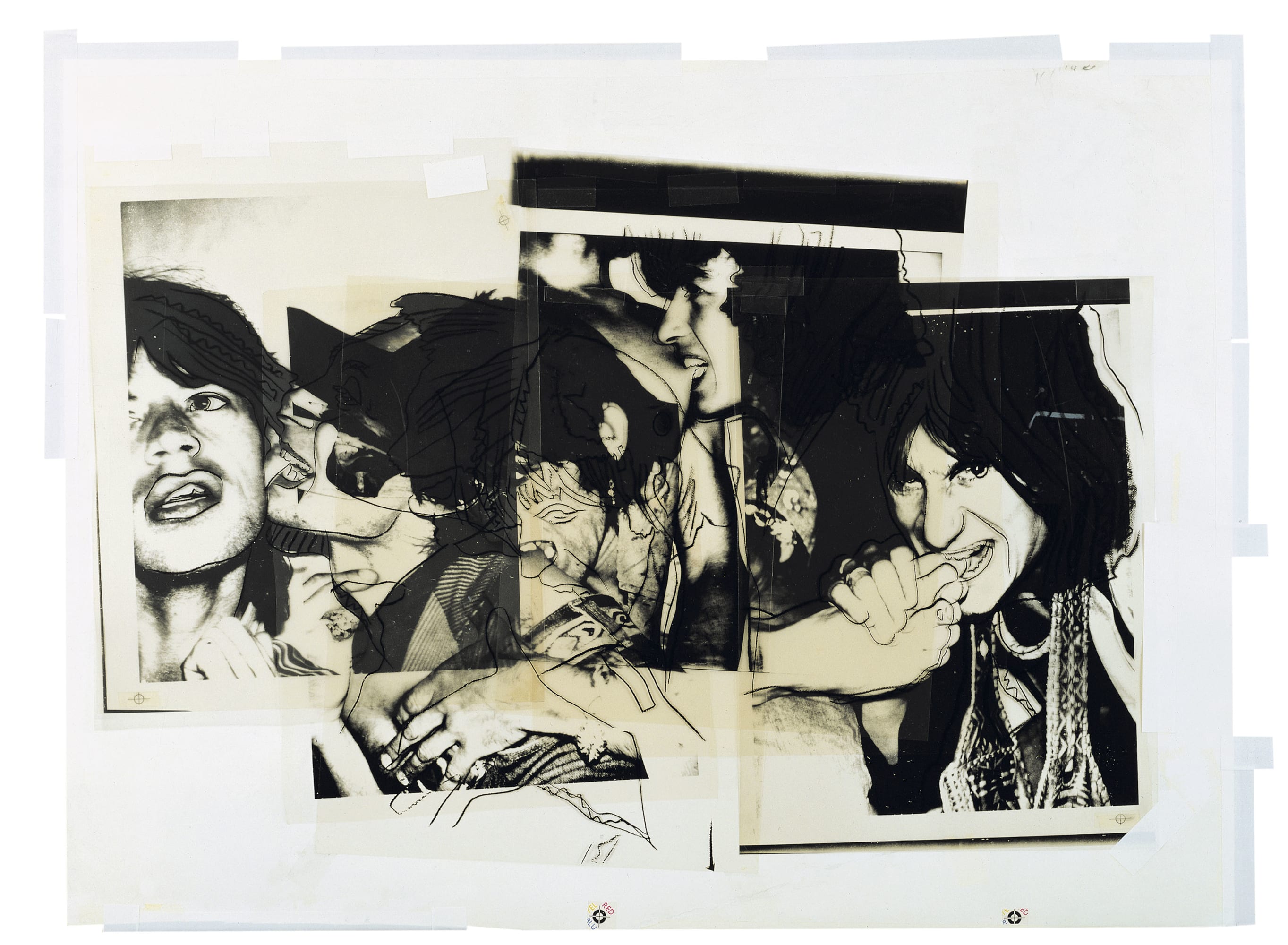

Overview
This grouping foreshadows the “Querelle” series, exhibiting the same distanced treatment of the celebrity world.
The Thaddaeus Ropac gallery is delighted to present two previously unseen series by Andy Warhol, created in the 1980s. “Querelle”, based on the film by Rainer Werner Fassbinder (inspired by Jean Genet`s book) and “Love You Live”, a series on Mick Jagger and the Rolling Stones.
Simple graphite drawings underlined here and there with red colour. The collage technique he used coupled with the use of acetate paper makes these works unique, even though they are reminiscent of Pop Art. Screen prints.
Male couples kissing, sailors embracing. Cocteau’s drawings come to mind, but here the depiction of homosexual love is less veiled, more direct. Andy Warhol always frequented this community, both during the Factory period and later on. He, who defined himself as a machine without emotion– without real sexuality – expresses, with the distance that characterizes him, the limits of a society he provokes. Andy Warhol underlines and emphasizes with callousness. We find the close-ups of American film but instead of Cary Grant and Grace Kelly, we find anonymous boys, living an uncommon love. Andy Warhol became the witness of his society by illustrating the demands of its minorities –in this case, homosexuals –the echo of which has continued to intensify in the following decades.
Andy Warhol met Rainer Werner Fassbinder in 1982 in Berlin. He noted in his diary: “He was reeeally strange. And when I say somebody’s strange, you know they’re strange. He was thirty-seven and did forty movies”. Rainer Fassbinder committed suicide that June. Andy Warhol adored his films.
One series of portraits of Mick Jagger and the Rolling stones, executed in 1975, is to be shown as well. This grouping foreshadows the “Querelle” series, exhibiting the same distanced treatment of the celebrity world.
Mick Jagger’s tongue is always present – perhaps as a symbol of rebellion.
Suicides, forbidden loves, famous painters and musicians: an exhibition of “Sex and Rock & Roll”.

















































































































































































